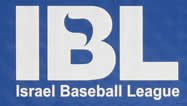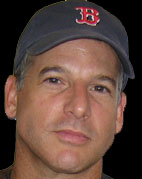To calculate whether a team should alter their drafting strategy with this new rule in place a variety of issues must be considered. Here are a few key ones that came to mind.
1) How often is Home Run Derby expected to occur during a season?
2) What attributes does a master of Home Run Derby possess?
3) Can these attributes be summoned reliably when needed?
4) Do these Home Run Derby attributes coincide with the standard desired attributes that are sought after in valuable baseball players?
How Often?
In the Major Leagues approximately 8% of games go into extra innings. Being that games in the IBL will be shortened to seven innings the 8% should rise a bit but for the arguments presented the rise is negligible. If we apply the Major League data to the IBL’s 45 game season then Home Run Derby will happen on average between 4-5 times in a season for each team. On the one hand this might seem like a small number, on the other hand, the team that does not reach the playoffs by a game or two might look back at a Home Run Derby loss as a pivotal opportunity lost.
What Constitutes a Derbymeister?
What attributes does a Home Run Derby master possess? It might not be as obvious as you think. The IBL drafters making the choices do not have past Home Run Derby data to rely upon. I am not convinced that having such data would serve the purpose anyway. Understandably, the drafters will most probably place past power numbers as the prime quality a top notch derbymeister must possess. This is reasonable, but a couple things need to be considered.
 Home Runs in real games do not correlate as consistently as one might think to Home Run Derby home runs. Take the MLB’s 2005 Home Run Derby as an example. It was won by Bobby Abreu who had 24 home runs during the season while Mark Teixeira came in next to last while having 43 home runs to his credit during the season. Last year, Ryan Howard won both the Home Run Derby as well as the regular season home run title. But digging a little deeper reveals that David Wright came in second last year while having 27 home runs on the season. Troy Glaus came in dead last and had 37 home runs in the regular season.
Home Runs in real games do not correlate as consistently as one might think to Home Run Derby home runs. Take the MLB’s 2005 Home Run Derby as an example. It was won by Bobby Abreu who had 24 home runs during the season while Mark Teixeira came in next to last while having 43 home runs to his credit during the season. Last year, Ryan Howard won both the Home Run Derby as well as the regular season home run title. But digging a little deeper reveals that David Wright came in second last year while having 27 home runs on the season. Troy Glaus came in dead last and had 37 home runs in the regular season.Does Size Matter?
Another option one might consider in order to sniff out a potential derbymeister might be size. Without much data on IBL players one might form a conjecture that player size plays a substantial part in Home Run Derby success. Not true, though there is some correlation it is weak. 2005 Derby champion Bobby Abreu weighs 210lbs, David Wright weighs 200lbs, Miguel Tejada won in 2004 weighing 213lbs and Garrett Anderson won in 2003 weighing 190lbs. Not small guys, but not in the same category as Troy Glaus - 240lbs, David Ortiz - 230lbs.or Albert Pujols – 230lbs.
Consistentcy
Can the power that hitters demonstrate during regular season games be summoned consistently when needed for Home Run Derby? The answer is, not really. Looking at past Major League Home Run Derby’s one can see that players that do great one year might not perform well the next year. As mentioned earlier, Miguel Tejada won the Derby in 2004 and came in next to last in 2006.
Raw Power vs. Consistent Power
 Another interesting point to ponder is the difference between raw power and consistent power. For example, Willy Mo Pena is known to put on an incredible show in batting practice by hitting monster home runs. Additionally, two years ago he hit both the longest and second longest recorded home runs in the National League. Last year he hit two of the top eight longest home runs in the American League. Clearly, Pena has tremendous power but it does not translate perfectly to real game consistent power. Though Pena can hit long home runs he does not challenge his teammate David Ortiz’s consistency (a home run every 10.3 at bats last year). In other words, raw power is not the same as consistent power. Consistent power is crucial to being a derbymeister. For the draft there is not much to go on to evaluate consistent power as opposed to raw power. Available player stats are weak and the tryouts too small a sample size. This point is really only worthy once the team’s hitters have been viewed in batting practice.
Another interesting point to ponder is the difference between raw power and consistent power. For example, Willy Mo Pena is known to put on an incredible show in batting practice by hitting monster home runs. Additionally, two years ago he hit both the longest and second longest recorded home runs in the National League. Last year he hit two of the top eight longest home runs in the American League. Clearly, Pena has tremendous power but it does not translate perfectly to real game consistent power. Though Pena can hit long home runs he does not challenge his teammate David Ortiz’s consistency (a home run every 10.3 at bats last year). In other words, raw power is not the same as consistent power. Consistent power is crucial to being a derbymeister. For the draft there is not much to go on to evaluate consistent power as opposed to raw power. Available player stats are weak and the tryouts too small a sample size. This point is really only worthy once the team’s hitters have been viewed in batting practice.Overlap of Skills
Lastly, how much overlap is there between desirable player attributes and derbymeister attributes? If they possess the same desired qualities then there is not much reason to consider a player for his Derby prowess potential. I believe, for the most part, this is the case. Power is desirable whether extra innings or the Derby rule is in play. Differences in skill sets might be speed, glove and arm. One can move like a turtle, have a little league glove and no arm to speak of and still be a phenomenal derbymesiter. But chances are if a player is in the draft to begin with, he must have reasonable skills beyond a powerful bat.
Don't Do It
In conclusion, drafting a player for his Derby potential will probably disappoint if other skills are being sacrificed to get the player. Considering that a team will probably play in approximately five Derby games coupled with the inconsistency demonstrated by Major League Derby participants, drafting a player because he might be a potential derbymeister is an unwise gamble. Draft the best balanced team and when Derby time rears its head at the end of seven innings, roll the dice with the teams best batting practice power hitters.


No comments:
Post a Comment